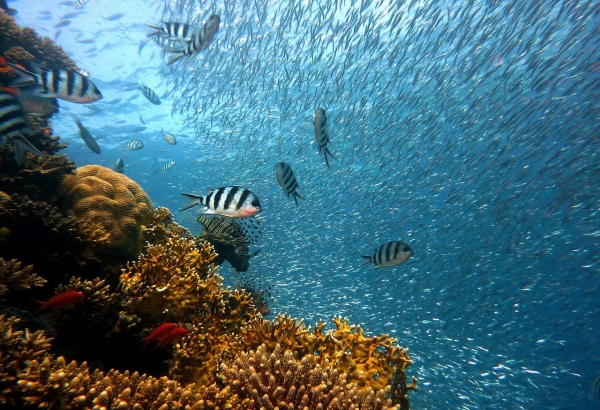Study models spatial patterns of “grazing halos” around reefs.
Study models spatial patterns of “grazing halos” around reefs.
In coral reefs throughout the world, visually striking bands of bare sand surrounding reefs are often visible in satellite imagery, but their cause remains a mystery.
One theory is fear. Parrotfish and other herbivores will leave a reef’s shelter to eat algae or the surrounding seagrass, but their fear of being gobbled up by predators may keep them from roving too far or eating too much, creating, what’s known as “grazing halos”—bands encircling reefs where vegetation once existed.
Prior studies have proposed that these and other halos may reflect what is known in ecology as the “landscape of fear” theory: fear of predation causes prey to alter their foraging behavior, which may result in the creation of halos marking where prey feel safe to eat.
Read more at Dartmouth College
Photo Credit: joakant via Pixabay




